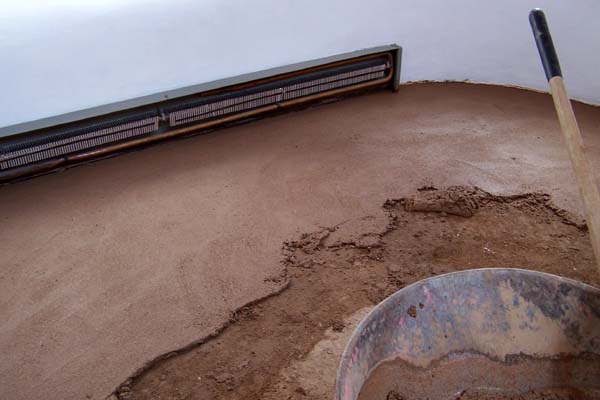
Laying the new top coat for the adobe floor.
Here we are in progress laying new adobe floor in this 1970’s passive solar house in Santa Fe, New Mexico. When we poured the new mud floor top coat, we had to adjust the depth of the new pour due to the uneven chunks which came up during the demo. We were happy the small office and guest room is only 200 sq. ft. in size.
For those who might not know much about earthen floors (also called as we do here, poured adobe floors, or mud floors), they are laid just as one would a cement floor. Screeding and leveling is key, of course, to an even as perfect as can be end result.
Earthen floors are one of our favorite floors to create on any project, due to the rich deep tones of the end result. Also a favorite and the most sustainable part, is finding clay rich soils on a project site and creating the floor materials without having to go to a store to get them. Or know that they might have been shipped half way across the world.
Once and earthen floor has dried completely, several coats of linseed oil will be added, some of the coats thinned as the floor begins to saturate. One dried the end result is water proofed and is durable. For added stain protection natural beeswax or a natural wax blend can be worked onto the surface which will protect a floor from any staining. Earthen floors quite possibly are our favorite floors to create -easy on the feet and legs, look like one large floor tile, and are beautiful. We have never seen an ugly one that is for certain!


